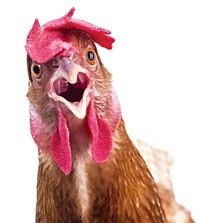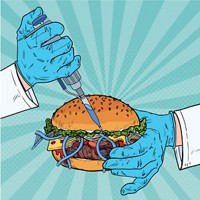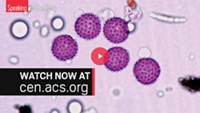Advertisement
Grab your lab coat. Let's get started
Welcome!
Welcome!
Create an account below to get 6 C&EN articles per month, receive newsletters and more - all free.
It seems this is your first time logging in online. Please enter the following information to continue.
As an ACS member you automatically get access to this site. All we need is few more details to create your reading experience.
Not you? Sign in with a different account.
Not you? Sign in with a different account.
ERROR 1
ERROR 1
ERROR 2
ERROR 2
ERROR 2
ERROR 2
ERROR 2
Password and Confirm password must match.
If you have an ACS member number, please enter it here so we can link this account to your membership. (optional)
ERROR 2
ACS values your privacy. By submitting your information, you are gaining access to C&EN and subscribing to our weekly newsletter. We use the information you provide to make your reading experience better, and we will never sell your data to third party members.
Food
Newscripts
A chemist enters a popular TV baking competition, and a cat food discovery
by Andrea Widener
March 21, 2020
| A version of this story appeared in
Volume 98, Issue 11
Baking bonds

Sally Newton spends her days working to find new antibiotics at Kansas State University. But outside the lab, her passion is baking, and it’s taken her into the high-pressure world of television baking shows.
Around 10 years ago, Newton became fascinated with making macarons, the delicate and difficult French sandwich cookie. After that, “I got completely hooked on baking in general,” Newton tells Newscripts.
As all good foodies do, she started watching a televised cooking competition called The Great British Bake Off (or The Great British Baking Show, as it’s known to US audiences) and its counterpart featuring US contestants, The Great American Baking Show. When she saw that the American version was looking for contestants, Newton initially thought, “This is crazy.” But then she decided to send in an application. She was shocked when she made it all the way to the final round of eligibility in Los Angeles, but alas, she didn’t make it onto the show.
But she decided to apply again. “It’s now or never,” she remembers thinking. The process starts with a 100-question online application, including details about the applicant’s baking knowledge. Applicants also submit a video of why they want to be in the show and pictures of at least five of their best bakes. “You have to really prove that you can make things that look nice,” she says.
That is followed by a phone interview—she did one of hers in the lab—and a Skype interview. Then she flew to LA one more time, carrying three pastries in an insulated backpack, including one from a recipe the show officials provided. If the producers liked those, you baked on camera in a final test. And you had to keep the whole experience secret.
It’s a grueling process, she says, but it’s not quite as bad as a grant application.
Eventually, Newton was accepted to be part of the fifth season of The Great American Baking Show, which aired in December 2019. She got 6 weeks to prepare her showstoppers—but because she couldn’t tell anyone, she had to keep going to work. “On the weekend I baked pretty much nonstop,” she says. “It’s intense.”
Last summer, Newton and her husband went to England, where the show is filmed, for a month under the guise of a scientific meeting. During the show, she spent 14–15 h a day taping, and the contestants were monitored at all times. They were constantly under pressure for the perfect shot. Plus they were sweating because they were shooting a holiday show during the summer and wearing cold-weather clothes. “It was one of the most exhausting things I’ve ever done,” she says.
But Newton also loved the experience, completing the baking challenges, talking with the other bakers, joking with the hosts. She thinks her chemistry knowledge really helped her in the show.
Spoiler alert: Newton was ousted in the third episode when her gingerbread house collapsed. At first she was really disappointed, but looking back, she would definitely return if given the chance.
“I had a blast,” she says.
A kibble conundrum

Cats everywhere might turn their sneer of disappointment toward cat food manufacturers once they find out the results of a recent study (PeerJ 2020, DOI: 10.7717/peerj.8337).
A group of scientists was hoping to find out how many cats eat birds when out on their daily strolls, explains zoologist Roland Kays from North Carolina State University, one of the study’s coauthors. To do that, the researchers decided to look at the isotopic traces of what cats eat compared with what was in their dry food.
But when they tried to test cat foods for their isotopic signatures, the results were all over the place. There was huge variability between brands and flavors, as well as between two samples that were supposedly the same.
The US brands were more unpredictable than those from Europe. “They don’t have the same reporting rules, you know,” Kays says.
Oh, cats know. And trust us, Newscripts reader, they disapprove.
Andrea Widener wrote this week’s column. Please send comments and suggestions to newscripts@acs.org.





Join the conversation
Contact the reporter
Submit a Letter to the Editor for publication
Engage with us on Twitter